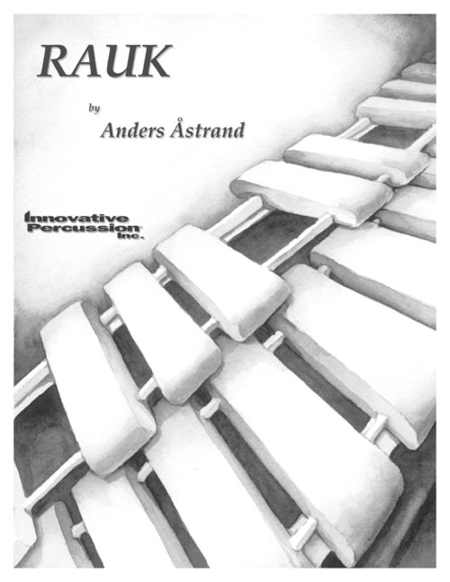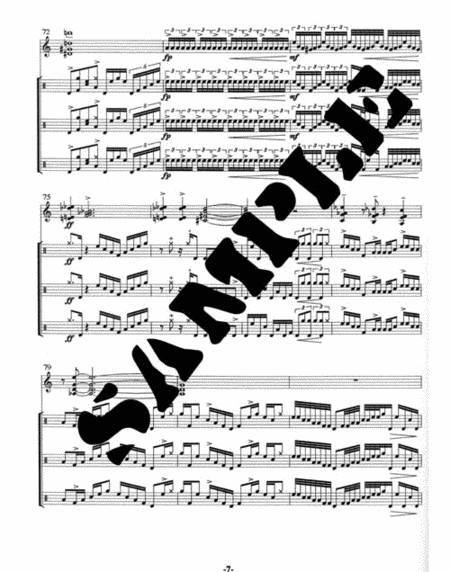Details
Description
SKU: IP.E-AA-RAU
Composed by Anders Astrand. Score and set of parts. Duration 18-20 minutes. Innovative Percussion #E-AA-RAU. Published by Innovative Percussion (IP.E-AA-RAU).8.5x11 inches.
Composer's notes: In 1999, Amores Grup de PercussiA3 in Valencia, Spain, commissioned me to compose a piece for solo vibraphone and three percussionists. I performed the piece on vibraphone with the group later that year. The piece is named after the tall limestone formations in Gotland, Sweden called Rauk.
Solo part contains large sections of improvisation.
Commissioned in 1999 by the Amores Percussion Group, Rauk (the name refers to tall limestone formations found in Gotland, Sweden) is scored for solo vibraphone and three percussionists playing xylophone, crotales and two marimbas. Each percussionist also performs with a setup of cymbal, Japanese gong, four toms and bass drum. Although identical in terms of the type of instruments, each setup is differentiated by pitch. The first percussionist's instruments are high pitched, the second percussion part requires instruments of medium pitch, and the third part stipulates low-pitched instruments. Several features of this work are of interest. One is a lengthy passage that may be unique in percussion ensemble literature. The three percussionists, using their high, medium, and low-pitched setups, must play rhythmically complex, technically challenging parts that are identical in all respects. To do so requires performing in unison, in an extraordinary display of ensemble precision. The results should be stunning, considering the pitch differential, which should have an effect similar to playing simultaneously in several octaves. The piece exploits a wide dynamic range, from the tutti passage described above to contrasting sections that follow, in which the texture thins (at one point down to a single marimba playing repeated eighth-note chords) and the legato, lyric qualities of the vibraphone are tapped. This section also capitalizes on the soloist's improvisational skills, a most important factor in the overall musical merits of the piece. One final feature that gives the vibist a substantial solo opportunity is a lengthy cadenza, which, printed separately, fills two pages. This ensemble is as much a showcase for the three percussionists as for the vibraphonist, although it affords an excellent opportunity to display the talents of a mature college mallet player. However, that individual must be proficient in improvisation with some familiarity with modal theory (the solo part does not include a realization for those who can-t improvise). A final plus for the piece is that there need be no concern that those playing the percussion parts will become bored. John R. Raush Percussive Notes, February 2005.


 Share
Share